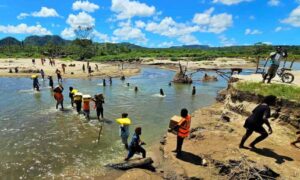
When twin cyclones Judy and Kevin hammered their way through the 83 tropical islands of Vanuatu in March 2023, the government and NGOs were quick to distribute supplies. The South Pacific country’s crops had been decimated and the need to feed the 300,000-plus population was a priority.
The bags of rice, packets of noodles and tinned tuna that communities depend on for the months after a disaster were welcomed. But unlike native staples such as yams, taro and sweet potato, these emergency foods only serve to worsen the region’s non-communicable diseases (NCDs) problem, according to experts.
“Ultimately, while such aid aims to address immediate food security concerns, it can cause long-term health problems, such as raising the risk of obesity and NCDs,” says Shazna Buksh, an assistant lecturer and NCD researcher at the University of the South Pacific in Fiji.
In 2011, Pacific island leaders declared that the region was experiencing an NCD crisis, with diabetes, heart disease and high blood pressure playing a part in 75% of the islands’ premature deaths. Limited arable land, the cheaper cost of low-quality imported food and a lack of education are to blame, say experts, but if the food aid that governments provided was more nutritious it could help prevent such illnesses.
Anything that affects food access has an impact on NCDs, says Penjani Kamudoni, Unicef Pacific’s nutrition specialist. When natural disasters strike – an increasingly frequent occurrence as a result of the climate crisis – healthy diets are among the casualties, as harvests are often badly affected.
“It can take anywhere between six months and a year to get that supply back,” says Emma Dorras, the nutrition manager at the Vanuatu nonprofit Wan Smolbag Theatre, adding that people prioritise finding filling food instead of looking for nutritional benefits.
